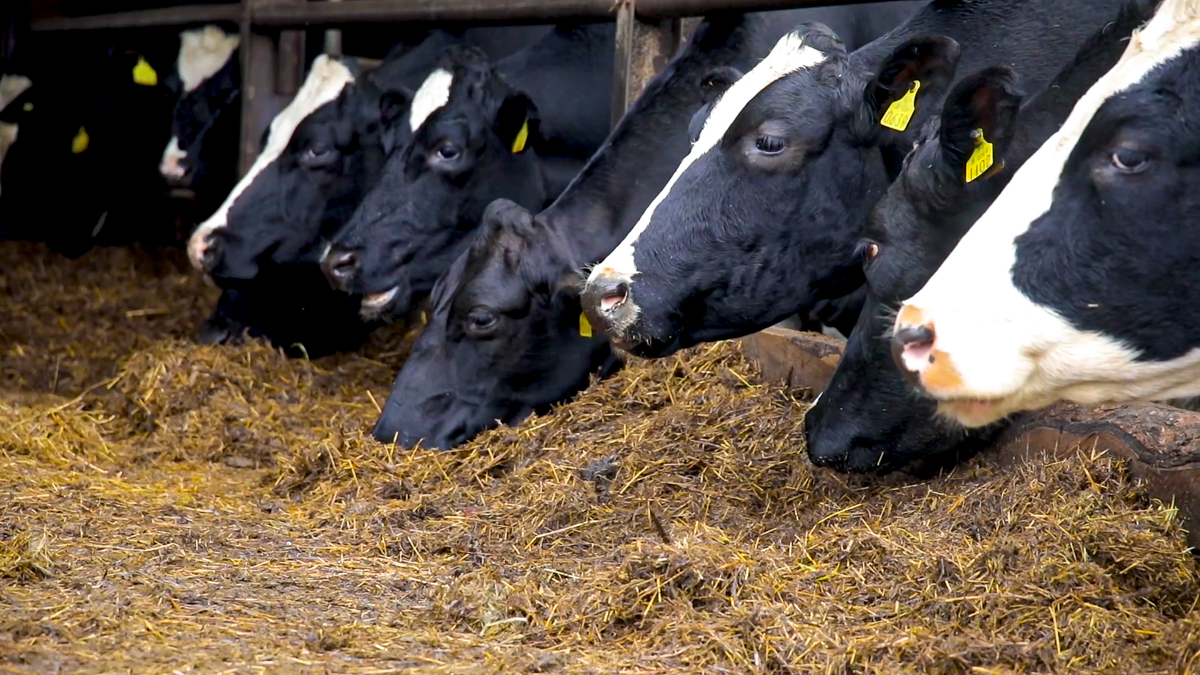The first step to a successful winter milk herd is ensuring that mineral and feed are at optimum levels to produce high quality milk and avail of winter milk bonuses as best as possible.
With the recent drop of milk price, the downturn in the global dairy export is a particularly worrying trend for liquid milk suppliers milking cows through the winter as winter milking is already an expensive and high cost system.
Liquid milk suppliers who are supplying fresh milk to the domestic market expect a certain premium to be paid to cover the higher costs involved with producing milk over the winter.
According to Teagasc, the costs of maintaining the average cow for the year-round supply of liquid milk has increased by €460 since 2021, and now milk prices are dropping just as producer groups are meeting co-ops to show the premium that is needed and as cows are beginning to calve.
For cows calving down, their diet is going to become increasingly more expensive as the months go on, and so farmers need to ensure that they are providing an adequate feed to maximise their milk price and keep down their costs as much as possible.
Winter milk
During the first three weeks pre-calving and three weeks post-calving, cows are still in their transition period and will need preferential treatment to ensure they calve down and their energy requirements are met to limit any metabolic issues from occurring.
Cows that calve down in the next couple of weeks will more than likely be let out to grass to see out the grazing season and to maximise their diet through grass and to keep feed costs down.
Spring grass is typically of a high dry matter (DM) content, while grass at this time of year has a lower DM content and a lower feed value.
Freshly calved cows at this time of the year are going to need a high quality forage added to their diet, as the low DM grass at this time of year is not going to be enough to fill them.
However, these cows will slowly transition from the paddocks back to indoor housing where maintaining yield, producing quality milk, and ensuring that the cows are in good health is based off a well-formulated diet.
Freshly calved cows have a low feed intake straight after calving, so the feed offered to them must be of a high quality.
Total dairy intake will be around 11-12kg in the days after calving, rising steadily by 1.0-1.2kg/week for around a month after calving.
After the first month, intake will rise by 0.5kg/week until they peak at eight to 10 weeks post-calving.
Cows can go into a negative energy balance or into a state of ketosis if milk yield rises faster than the cows’ intake after calving, which results in the cow losing body condition to support her milk production. It is often to referred to as ‘milking off her back’.
This loss of condition is normal but must be controlled to less than 0.5 BCS units through silage and concentrates in the cows’ diet.
Making up the diet with too much meal just after calving can cause digestive upsets and may substitute forage in the diet, increasing costs.
In order to make up a diet effectively, farmers need to get their silage tested, especially for liquid milk suppliers as it is the only way of keeping down costs without impacting on cow performance.
The concentrate feeding levels at different levels of silage quality and different yields, as per Teagasc, are as follows:
Milk yield
65% DMD
70% DMD
75% DMD
20L
5.5kg
4.0kg
3.0kg
25L
8.0kg
6.5kg
5.5kg
30L
10.0kg
8.5kg
7.5kg
35L
12.5kg
11.0kg
10.0kg
Typically, every five unit drop in DMD will need 1.0-1.5kg extra concentrates to compensate for the lower energy level.
The typical 600kg cow will require 7.5kg of concentrate to produce 30kg of milk on 75% DMD silage, whereas that requirement would be 10kg if the silage was 65% DMD.
Farmers need to remember that silage is the key to any winter milk diet, and needs to have a dry matter (DM) of 25-30% and over 74% DMD.
For instance, a cow that is producing 35L and eating silage with a 65% DMD silage may require 12-13kg of meal/day to support production and condition – farmers should be aiming for a 15.5-17% crude protein nut.
Minerals
Winter diets often lack key minerals like magnesium, calcium, phosphorus, and trace elements such as copper, selenium, and iodine, and so offering these minerals in a dusting twice a day or in the water trough is suggested.
To ensure that each cow is receiving their adequate mineral intake every day when you are dusting minerals onto their feed, it should be done twice a day with 60g/cow in each feed – this ensures all cows have access to minerals and is crucial where feed space is the limiting factor.
Trace minerals like copper, selenium, zinc, etc., should be fed from at least six weeks pre-calving in order to achieve adequate levels for when they are calving down.
The aim should be to have 22% magnesium included in the dry cow mineral, with high levels of vitamin D of at least 14,000 units – older cows are going to need high levels of vitamin D to prevent milk fever.
A high calcium bolus with vitamin D is recommended when cows are near calving down to prevent milk fever, instead of straight calcium bottles under the skin for the purpose of preventing milk fever at the point of calving.

